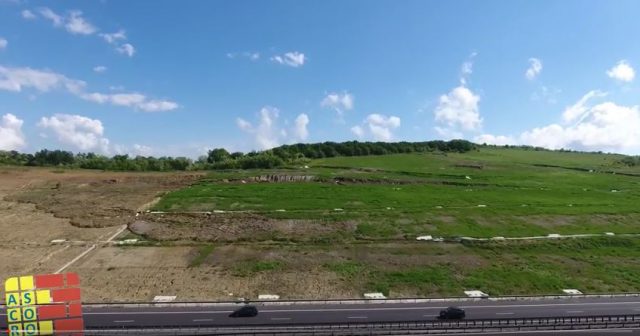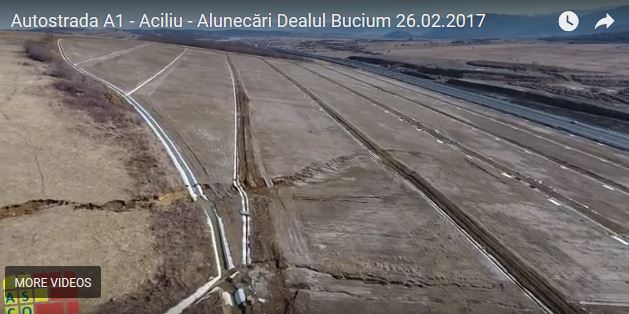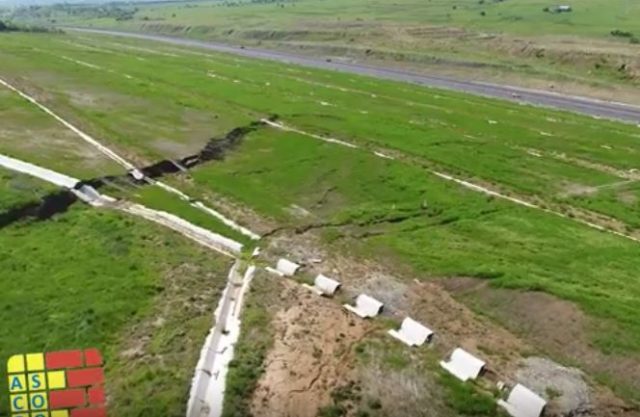6 June 2017
An update on the Bucium Hill landslide problem in Romania
Posted by Dave Petley
An update on the Bucium Hill landslide problem in Romania
Back in March I posted an article about the Bucium Hill landslide problem on the A1 motorway in Romania. To recap, this is a major road across the Transylvanian hills, recently constructed. The slope has suffered repeated landslide problems, and as a result has had to be trimmed back repeatedly. The slope still shows extensive indications of distress.
Two new videos are available of the site, both shot from drones. The first is from 29th March 2017:
.
And the second is from 21st May 2017:
.
The slope continues to show extensive signs of movement, as this overview image demonstrates:-

An overview of the slope stability issues at Bucium Hill in Romania. Still from a Youtube video.
.
There appears to be a notable change in the slope on the left side (looking towards the road). This was this section of the slope in February:

The left flank of the Bucium Hill landslide in February 2017. Still from a Youtube video
.
This is the same section in May 2017:

The left flank of the Bucium Hill landslide in May 2017. Still from a Youtube video.
.
The lateral scarp in this area appears to have developed further over this period, indicating that the slope continues to deform. Needless to say these broken drains and drainage channels are a problem. The drains are of course designed to remove water from the slope in order to prevent erosion and to draw down the pore water pressure. But in such cases maintenance of the drains is critical, as broken drainage channels can become a very effective conduit for feeding water into the slope in a concentrated manner. In this case, as the images show, the drains will feed water directly into the shear surface. This is exactly what one should avoid. Whilst I cannot say whether this slope is in a critical condition (I assume that proper monitoring is being undertaken to ascertain this), the need to repair these drains is undeniable.


 Dave Petley is the Vice-Chancellor of the University of Hull in the United Kingdom. His blog provides commentary and analysis of landslide events occurring worldwide, including the landslides themselves, latest research, and conferences and meetings.
Dave Petley is the Vice-Chancellor of the University of Hull in the United Kingdom. His blog provides commentary and analysis of landslide events occurring worldwide, including the landslides themselves, latest research, and conferences and meetings.